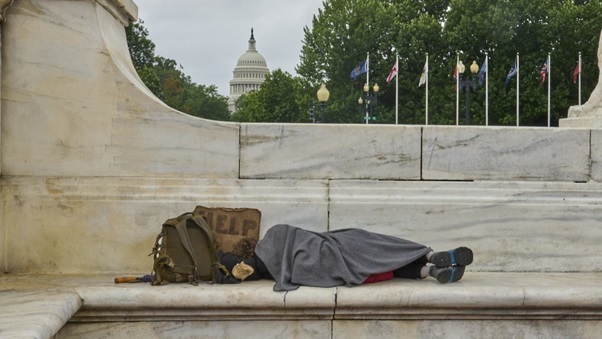Trump’s getting tough on D.C.’s homeless, and it’s bringing back memories of San Francisco’s sweeps raising questions about safety, rights, and what fixes actually work.
A Big, Divisive Move
D.C.’s in a mess politically and for the people who live there. Trump just announced a big federal plan to handle homelessness and crime in the city. He called it a crime emergency, gave the National Guard more power (including guns), and started clearing out homeless camps all over D.C.
Some see it as a promise of things getting better and safer. Others feel like they’ve seen this before. It’s a lot like San Francisco’s camp sweeps over the years. Critics say those sweeps were more about hiding the problem than helping people who really need it.
Why This Matters
Every day in D.C., you see kids going to school, people heading to work, and tourists taking pictures. But behind all that, there are tons of people living in tents, under bridges, or in parks.
Trump’s plan wants to make the capital pretty and safe again. But here’s the thing: does pushing people out of sight really fix homelessness? Or does it just move the problem somewhere else?

What’s Happening
In the last few weeks, D.C. authorities, with federal backing, have:
Cleared out over 70 camps, getting rid of tents and belongings.
Ordered homeless people to go to shelters or get arrested
Put the National Guard on patrol, making a military presence visible in neighborhoods.
The scenes are intense: bulldozers taking away tents, people rushing to pack up everything they own, and families unsure where they’ll go next.
It’s hard. It’s emotional. And it’s dividing the city.
San Francisco: Been There, Done That
San Francisco has seen this movie before. For years, the city did camp sweeps sometimes in the same areas over and over. The streets might have looked cleaner for a bit, but homelessness didn’t disappear. It just moved around.
Critics worry that Washington is going to do the same thing: make things look good for a short time but create bigger problems later.
Who’s For It, Who’s Against It
Supporters say D.C. needed action right away. They argue that rising crime and visible homelessness hurt tourism, local businesses, and how people see the nation’s capital. For them, Trump’s plan shows he’s strong.
But critics, including lawyers and homeless advocates, disagree. They warn that:
Shelters are already packed, so forcing people to go isn’t realistic.
Using the military to deal with homelessness makes it hard to tell the difference between public safety and civil rights.
D.C. doesn’t have as much control over itself as states do, so Trump’s takeover bypasses local say.
As one advocate put it, These aren’t criminals. They’re people struggling. You can’t just bulldoze your way to a fix.
What’s Next?
The fight’s not over.
There are legal challenges, with D.C. leaders saying the federal government is going too far.
People are protesting, saying the city feels like a testing ground for harsh policies.
This could affect other cities Trump has hinted that this approach could spread to places like New York or Chicago.

It’s not just about D.C. It’s about how America decides to deal with homelessness across the country.
Trump’s plan for D.C. is in your face. But being visible isn’t the same as making progress. If they don’t put money into housing, mental health care, and long-term support, the problem is simple: people disappear from the streets, but the crisis doesn’t go away.
San Francisco’s story is a reminder. You can move tents. You can clear streets. But without real fixes to follow, homelessness will always come back.
In the end, this isn’t just politics. It’s about people, their dignity, their safety, and whether America will choose to crack down or show some heart in the long run.


